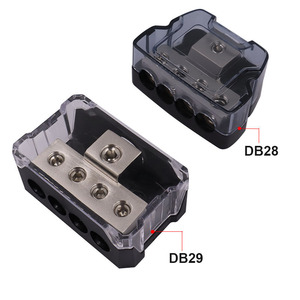Introduction to Gage Block Calibration
Gage block calibration is critical in ensuring the accuracy and precision of measurement tools used across various industries. A gage block, also known as a slip block or Jo block, is a primary standard used to calibrate measuring devices. It’s essential for maintaining quality control and measurement reliability in manufacturing, engineering, and research. By understanding the different aspects of gage block calibration, practitioners can effectively implement these standards in their operations, ensuring the highest levels of accuracy in measurements.
Types of Gage Blocks for Calibration
Gage blocks can be categorized based on different parameters such as material, shape, and application. Here are the primary types:
- Standard Gage Blocks: Made from steel, ceramic, or carbide, these blocks are calibrated according to national or international standards.
- Set Gage Blocks: A set includes multiple blocks of varying thicknesses, which can be stacked to achieve more precise measurements.
- Specialized Gage Blocks: Custom-designed blocks for specific applications or environments, often used in specialized calibration tasks.
- Temperature Compensated Gage Blocks: Designed to maintain dimensional stability despite temperature changes, crucial for environments with fluctuating temperatures.
Function and Features of Gage Block Calibration
The primary function of gage block calibration is to ensure the precise measurement of other tools and devices. Here are the key features:
- Dimensional Accuracy: Gage blocks provide a highly accurate reference for length measurements, ensuring that other measuring instruments are calibrated accurately.
- Surface Finish: Gage blocks have a fine surface finish, allowing for a high degree of flatness and ensuring reliable contact with measuring surfaces.
- Material Properties: Made from materials like high-quality steel or ceramic, they offer outstanding durability and resistance to wear and tear.
- Calibration Standards: They are manufactured and calibrated according to stringent national and international standards, ensuring widespread acceptance in various industries.
Applications of Gage Block Calibration
Gage block calibration is widely employed in industries that demand high precision and accuracy. Some applications include:
- Manufacturing and Machining: Used in the setup of machines and tools to ensure components are produced to exact specifications.
- Quality Control: Essential for verifying the performance of measuring instruments, ensuring that products meet industry standards.
- Metrology Laboratories: Used by metrologists for calibration of measuring equipment, ensuring traceability to national standards.
- Aerospace and Defense: Critical in the production of components where measurement accuracy is paramount for safety and reliability.
Advantages of Gage Block Calibration
Investing in gage block calibration brings numerous advantages to organizations, including:
- Enhanced Accuracy: Frequent calibration ensures measurement tools perform to their highest standards, increasing overall product quality.
- Time and Cost Efficiency: Reduces the need for reworks and discarded units, saving time and reducing material costs considerably.
- Improved Customer Satisfaction: By consistently ensuring product quality and standards compliance, businesses can enhance trust and reliability with their clients.
- Regulatory Compliance: Helps in meeting the necessary industry regulations and maintaining certifications that require regular equipment calibration.


































